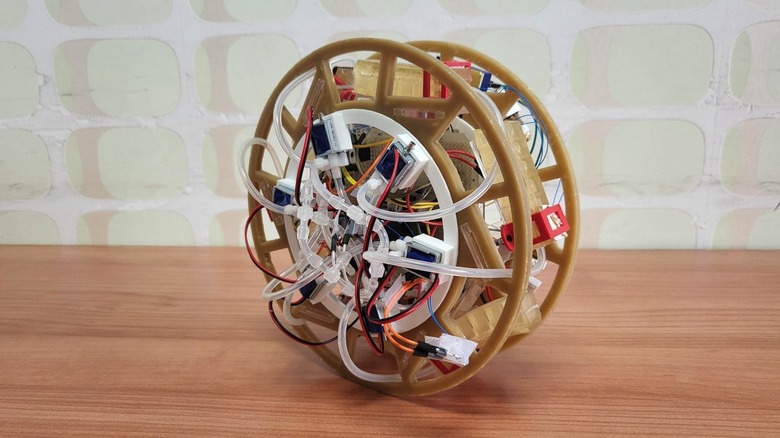Researchers Made A Battery You Can Eat That Will Power An Edible Robot
At some point in the not-too-distant future, a doctor might instruct you to swallow a robot you can eat to deliver some sort of therapy with incredible precision or perform some kind of test. You'll probably do it without thinking twice, knowing that all of the robot's components are made of food.
You'll also be able to eat (well, digest) the battery without worrying about any other chemical reactions or side effects involving electric-powered machines that inhabit your body briefly.
That won't happen until the researchers from the RoboFood project and similar initiatives can build an entire robot out of edible substances. On top of that, they have to miniaturize it so you can swallow without chewing it. And it has to taste well too, which is the only way we'll ever eat such robots.
The RoboFood scientists based at the Swiss Federal Institute of Technology (EPFL) wrote a new article in Nature Reviews Materials addressing the challenges of making robots that can be eaten.
The RoboFood project won an EU grant worth €3.5 million ($3.76 million) to develop robot technology you can eat. The team consists of Dario Floreano, director of the Laboratory of Intelligent Systems at EPFL, Remko Boom from Wageningen University, The Netherlands, Jonathan Rossiter from the University of Bristol, UK, and Mario Caironi from the Italian Institute of Technology (IIT).
The researchers detailed some of their findings that allowed them to build a working battery out of food items you'd normally eat and consider other elements that could be used to design an edible robot. But they're still figuring out which components they can use:
For example, gelatine can replace rubber, rice cookies are akin to foam, a chocolate film can protect robots in humid environments, and mixing starch and tannin can mimic commercial glues.
EPFL scientists developed an edible gripper made of gelatine. The structure could grip an apple and be eaten after the fact. More recently, EPFL, IIT, and the University of Bristol made conductive ink that can be sprayed on food to sense its growth. The ink is made of activated carbon, which acts as a conductor. Haribo gummy bears act as the binder. Other sensors can then register the pH, light, and bending.
The more exciting development is the edible battery that IIT scientists produced last year. It's a rechargeable battery that uses "riboflavin (vitamin B2) and quercetin (found in almonds and capers) in the battery poles, adding activated carbon to facilitate electron transport and nori algae, used to wrap sushi, to prevent short circuits."
They used beeswax to protect the 4 cm (1.57 inches) edible battery, which could produce currents at 0.65V. Connect two of those, and they can power a light-emitting diode for 10 minutes. That's a safe voltage for ingestion. But imagine how large an edible robot would be if batteries are that big.
The researchers still need to make the robot. The article explains that EPFL and Wageningen University scientists made a drone in 2022 that had rice cookies and gelatine wings. EPFL and IIT researchers created a partially rollable robot (seen in the top image). It uses pneumatic gelatine legs and an edible tilt sensor.
But they don't have all the components needed to build an entire robot that you can eat, complete with a battery to provide energy.
Also, one of the most crucial issues that must be considered is the human reaction to the prospect of eating robots. New Atlas mentions a 2024 study that looked at human responses.
Those researchers gave test subjects two robots made of sugar and gelatin. One moved, and the other was static. Participants perceived the former as a creature, while the static one was considered food. Interestingly, the moving robot was seen as tasting better than the static one.
All that tells me there's no telling when we'll get to robots that are safe to eat. But it sure looks like the researchers have plenty of ideas to overcome hurdles.
